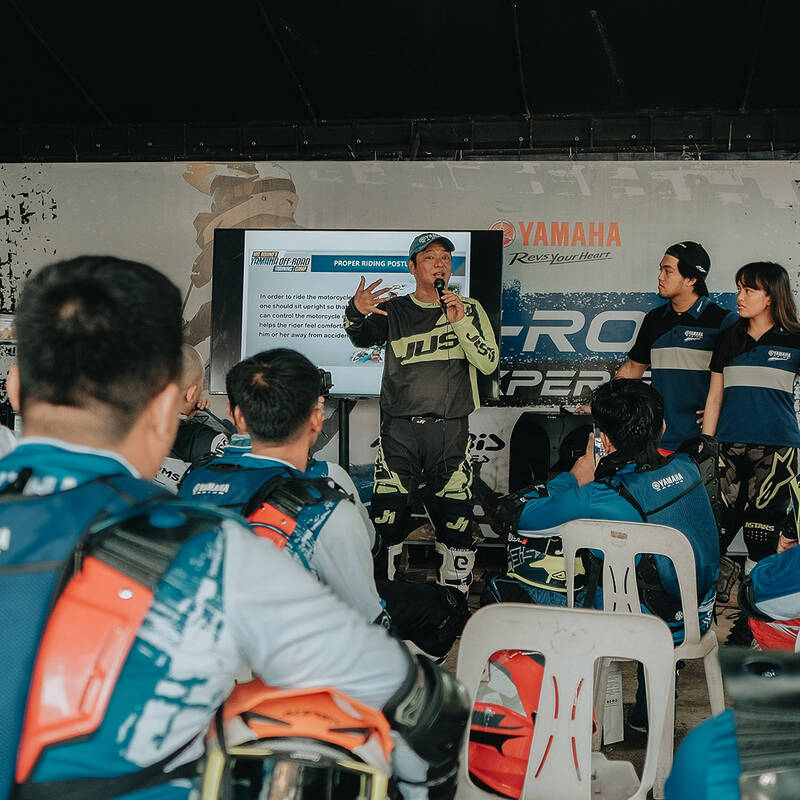YAMAHA Motor believes that riding safety can be developed by training riders to be more united with their motorcycles. Called “Jin-Ki Kanno” the ideal promotes the development of technologies born from “the seductive exhilaration felt when they truly become one with their machine.”
Running alongside Jin-Ki Kanno is “Jin-Ki Anzen” which according to Yamaha Motor President Yoshiro Hidaka, expresses the company’s belief that having people and machines work together in complementary ways results in more safety.
“Jin-Ki Kanno and “Jin-Ki Anzen can make riders more aware of safety, develop more sophisticated safety skills and for Yamaha to create safety-related technologies. In order to create a safer world of personal mobility, Yamaha Motor will begin working to enhance the human-machine relationship in ways that bring growth and advancements to both,” Hidaka told motoring journalists and safety experts in a virtual meeting earlier this month.

Hidaka focused on Yamaha’s Motor Safety Vision, which centers on technologies that help improve the user skills, as well as the connectivity of the rider and their machines.
“The Jin-Ki Kanno í— Jin-Ki Anzen Safety Vision expresses Yamaha Motor’s unique approach to create a world free of accidents together with our customers, in which users can experience the joy and Kando (a Japanese word for the simultaneous feelings of deep satisfaction and intense excitement that we experience when we encounter something of exceptional value) that comes from progressing their own skills and abilities while having fun at the same time,” Hidaka explained.
“Some 30 percent of motorcycle accidents are caused by error or negligence on the part of the rider, but over 50 percent are due to car driver error or negligence. The first step we must take is to eliminate errors by riders in identifying potential dangers, making sound judgments, and skillfully operating the motorcycle to avoid said dangers,” Heiji Maruyama, Yamaha Motor Senior Executive Officer, and Director and Chief General Manager of Technical Research & Development Center commented. He said that this trend shows that deaths from car accidents are slowly declining, while the number of fatalities from motorcycle-related accidents is showing a slight increase. These figures are from the Japanese market but likewise reflect a global trend, with special mention in Asia.
“We must work to improve the conspicuity and recognition of motorcycles by car drivers. It is easy for motorcycles to enter the blind spots of cars and trucks, plus they often appear to be moving slower or are farther away than they actually are, and this leads to errors in driver recognition and decision,” Maruyama said pointing out how accidents occur in a flash, and successful avoidance takes skill and knowledge as well as technologies for collision-avoidance.
According to Yamaha’s safety presentation, 70 percent of motorcycle crashes happens within only two seconds from the moment the cause of the collision–whether it be with a bigger vehicle, a road obstacle or another motorcycle.
“We also know that the majority of riders are currently unable to make the right maneuvers to prevent the accident in such a short span of time. Additionally, it is no easy feat for a rider to do this properly while facing imminent danger. In these kinds of situations, instead of solely relying on user decision and skill to perform the right evasive maneuvers, it is essential that we try to help with rider-assistive technologies,” Murayama emphasized.
Yamaha’s data-driven study of many kinds of road crashes has resulted in its ability to fine-tune safety technologies while retaining its machines exciting performance. Whatever findings are converted into technologies that are built into its products and is a solid part of Yamaha’s Monozukuri framework.
To support this the Jin-Ki Kanno í— Jin-Ki Anzen ideals center on safety technologies, increasing user skills and human-to-machine connectivity.
By creating systems that inform the rider of surrounding vehicles, traffic rules and conditions, or even predictions of potential risks, Yamaha believes it can assist the rider’s own recognition of dangers so that they can make better decision calls. When riding at low speeds, for instance, believed to be safer than when riding at high speeds, actually need a higher sense of balance. Falling over or tipping can cause serious injury at low speeds. Yamaha has developed technologies that can assist the rider’s inputs to keep vehicle behavior stable. Furthermore, should an accident occur, other systems can help to reduce damage or injury, such as deploying onboard rider protection devices or sending incident reports to emergency services automatically.
“We will grow the number of touchpoints we have with all our customers–in both the digital realm and the real world–and provide helpful opportunities to not only improve riding skills but also gain safety-related knowledge and experience while having fun along the way. To do this, we will continue our work through the Yamaha Riding Academy, but also introduce more on-demand and microlearning content so that customers can easily participate in riding safety classes,” Murayama says. The Yamaha Riding Academy is available in the Philippines both as a virtual training class and via training camps like the Yamaha Off-Road Experience roadshow.
Finally, Yamaha said that it will find new ways to improve the “Jin-Ki” or human—machine connectivity. To do the company is constantly collecting data globally on motorcycle use and operating conditions. The data will be processed and analyzed with the aim to using that information to create more Jin-Ki safety initiatives.






